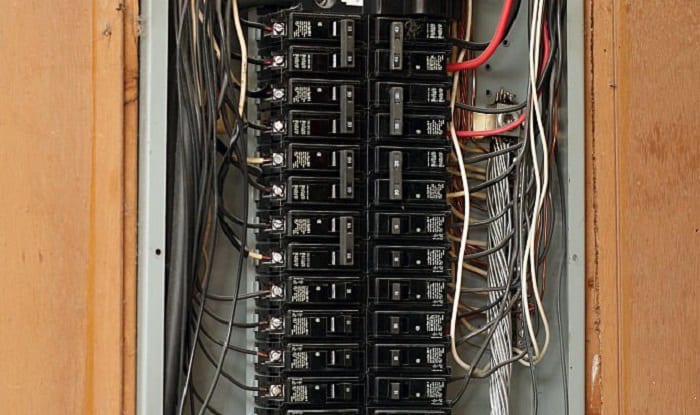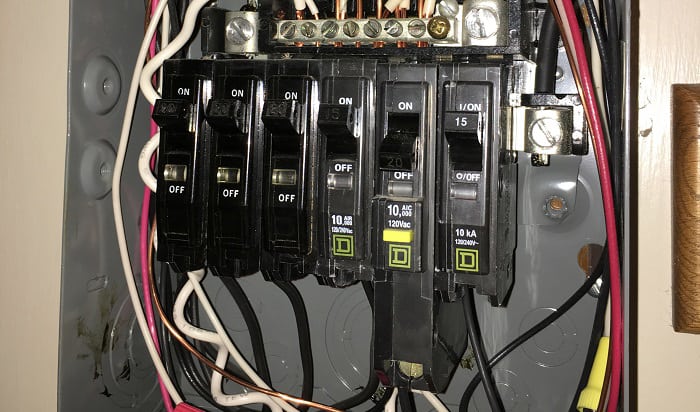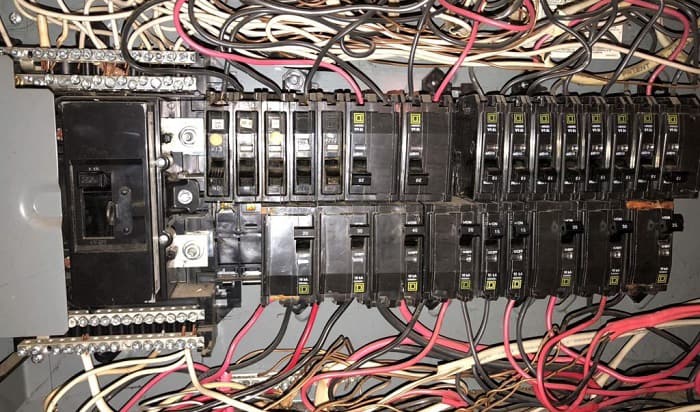Bonding ground and neutral wires may be the standard operating procedure in your average electrical service panel. However, that’s not the case with a subpanel.
Naturally, you’re curious as to why this is so. After all, we can’t deny that there are many similarities that main panels and subpanels share.
This article will explain the typical setup of isolating subpanel grounding and neutral wires and why it’s necessary.
Table of Contents
The Importance of Bonding at Service Panels
Essentially, we keep neutral and ground bonded at the main service panel due to safety reasons. We have to bond these two together so we can complete the return path to the breaker, allowing it to fulfill its protective purpose if there’s a fault.
As long as the bonding between the two occurs at the service panel and a correct circuit is maintained, regardless of how many subpanels the main panel’s feeding, the breaker will always trip – including instances when ground faults happen.
More importantly, it ensures safe and optimal electrical flows.
Why Subpanels Need to Have Unbonded Neutrals and Grounds
Are subpanels any less safe because they separate the neutral and ground? Not really.
Subpanels feed from the main panel’s breakers, so there’s really no safety concern with unbonded subpanel neutral and ground.
On the other hand, it’s actually riskier bonding neutral and ground in a sub panel, as proven by one main thing: objectionable current.
Objectionable current is essentially current that’s flowing in the wrong place (or, to be exact, wires). It’s “objectionable” because it paves the way for electrical hazards. Consider the following facts:
- Electrical panel ground wires can’t serve as neutral wires because they’re not designed to be a return path for the current, which is essentially the latter’s main function.
- Bonding almost always opens up a new path where the current can prospectively flow.
From these two facts alone, it’s already quite clear why when you’re consulting a proper grounding a subpanel diagram, there are virtually no bonding jumpers connecting neutrals and grounds in subpanels.
Should Ground and Neutral Be Separate in Subpanel?
On the whole, it’s important to separate neutral and ground in subpanel because of the following:
It’s a “breeding ground” for objectionable current.
Sure, the bonded line may be there, and the current may still optimally flow. But once you bond neutral wires and ground wires at your sub panel bonding screw, you create another path for the current and, more dangerously, for a ground fault to flow.
- Just think of the fact that neutral wires are connected to various everyday appliances like laptops, TVs, ovens, refrigerators, etc. Once a ground fault occurs and the neutrals and grounds are bonded on the same bus bar subpanel, your electronics will be damaged or, worse, toast.
- If you bond at subpanels, you technically defeat the purpose of a ground wire because the ground fault will end up in any load connected to the neutral wire or into the earth.
- Short circuits are another obvious concern. With numerous paths for objectionable currents to flow through, a short circuit may take a direction where it won’t trigger a circuit breaker to trip. The worst-case scenario is it also fries your gadgets.
All these scenarios are dangerous because, in the end, the electrical current will go through anything that conducts it. It’s chaos, in short, which is something every responsible electrician doesn’t want in an electrical wiring system.
It’s actually required by Code.
You may chance upon a detached garage sub panel wiring diagram specifically mentioning sections in the National Electrical Code or depicting them with how wires are set up. These guidelines, though paraphrased, stand out in particular:
- The main and sub panels should be connected to the same earth potential as far as is practically possible using an underground grounding rod.
- Subpanels should be connected to the main panel by the same path while neutral and ground should only be joined at the main panel.
So, the next time you see a subpanel wiring diagram in a detached building that tells you to bond ground and neutral wires, you need to do a double take and make sure you read that right.
Incidentally, if you have the time and want to ensure that you’re wiring your subpanel properly, I suggest you watch this twelve-minute video:
The licensed electrician who made it walks you through the whole process and also asserts the importance of keeping ground and neutral isolated in a subpanel.
When Should Grounds & Neutrals Be Connected in a Subpanel?
As stated above, connect the ground and neutrals in the main panel only.
Conclusion
To summarize everything, we need to keep subpanel grounding and neutral isolated to maintain the correct flow of current from the subpanel to the main panel and prevent short circuits and ground faults from harming our electrical system and appliances.
The Code only reinforces this practice.
On the whole, it’s vital for you to learn how to properly wire both a service panel and subpanel if you mean to DIY most of your installations.

I am Edwin Jones, in charge of designing content for Galvinpower. I aspire to use my experiences in marketing to create reliable and necessary information to help our readers. It has been fun to work with Andrew and apply his incredible knowledge to our content.



